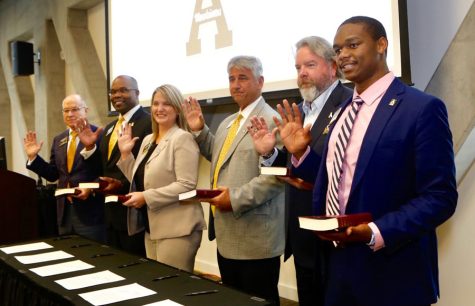In May, all 17 institutions in the UNC System were informed that policies and programs which fall under the diversity, equity and inclusion policy would be curtailed.
Later, on July 24, UNC-Asheville and UNC-Greensboro saw a loss of several degree programs and academic departments, including philosophy, religious studies, anthropology, physics and mathematics, according to The Associated Press.
Every day of the academic year, students, faculty, staff and extended members of North Carolina public universities are affected by the decisions and policies made by a group known as the Board of Governors.
As incoming freshmen and returning students begin their time as members of a public institution of higher education, understanding who makes the decisions that affect their tuition, classes, campus and more, may become essential.
Who is the BOG?
The BOG is comprised of 24 voting members who are elected by the North Carolina General Assembly, according to section 100.1 of the UNC Policy Manual. All 17 universities in the UNC System fall under the BOG’s umbrella of power.
Members are elected every odd year and serve four-year, overlapping terms, according to section 100.1 of the UNC Policy Manual.
There are three officer positions on the BOG: the chair, vice chair and secretary. These positions are elected by the 24 voting members at the last meeting before July on even years, according to the BOG website. Officers serve two-year terms.
The current officers are Chair Wendy Murphy, Vice Chair Kellie Blue and Secretary Pearl Burris-Floyd.
In addition to the voting members, there are also several “special members” within the BOG, including past members, past officers and past governors of North Carolina. Special members have the same powers as regular members, but cannot vote, according to section 100.1 of the UNC Policy Manual.
The group’s structure was developed in 1971 by the North Carolina General Assembly, and replaced the former Board of Trustees, according to the BOG website.

What does the BOG do?
The BOG has been entrusted with powers by the General Assembly that have the potential for large impact.
“The Board of Governors shall plan and develop a coordinated system of higher education in North Carolina,” according to section 100.1 of the UNC Policy Manual.
Some of their extensive responsibilities include establishing new UNC System institutions, determining academic degree programs and departments at each UNC System institution and deciding enrollment levels.
In order to delineate their decisions and policies, the BOG maintains “The Code of the Board of Governors of the University of North Carolina and the UNC Policy Manual.”
This manual extensively details the policies every university must abide by. It covers policies pertaining to a vast range of areas like student employment, tenure, student government and financial aid.
Additionally, the BOG also has a hand in determining who sits in positions of power.
The UNC System president and office is elected by the BOG. The current president is Peter Hans, who was elected in August 2020, according to the UNC System website.
The BOG elects each UNC System institution’s chancellor after the president makes a nomination, according to the UNC Policy manual. They also elect eight of the 13 members of each university’s Board of Trustees.
How can you be involved?
The BOG holds at least six regular meetings each year, according to the UNC Policy Manual. These meetings are open to the public and can be viewed through a video stream or through PBS North Carolina’s stream.
There are also limited opportunities in which the BOG turns to students, faculty, staff and community members for input.
On July 19, Hans said in a news release that the search for App State’s next chancellor is underway. According to the release, university and community participation is encouraged through taking online surveys and in-person listening sessions.



